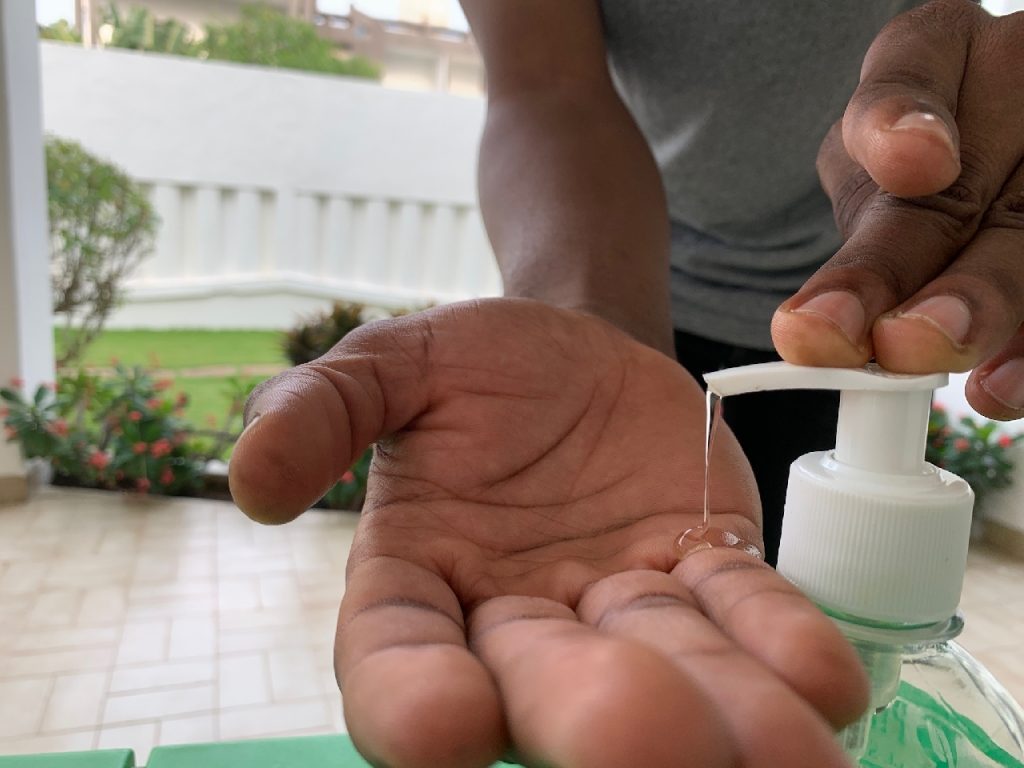The long term effects of COVID are numerous, and some of them can be permanent. The most common lasting effects are chest pain, cognitive problems, and depression. Other long-term effects include persistent shortness of breath and rapid heartbeat. Recovering from COVID can take months, even years, and it can be hard to return to pre-COVID levels of physical and mental health.

COVID-19 can cause multi organ damage
The latest data on the pathophysiology of COVID-19 infection suggest that it involves the complement system, a component of the innate immune response. This pathway activates the complement system, which in turn induces vascular inflammation, endothelial cell dysfunction, and thrombogenesis.
The result is multiple organ failure, including the kidney. COVID-19 is associated with an inflammatory response in the host, which is the first defense against infection.
The study showed that COVID-19 is associated with an increased risk of organ dysfunction and organ failure, particularly in patients with chronic lung disease. COVID-19 causes inflammation and damage to cells throughout the body, including the lungs.
The organs affected most commonly were the heart, kidneys, and liver. It was also associated with a higher risk of death and hospitalization in elderly patients and non-white ethnic groups.
Researchers at UCLA created COVID-19 in mice to better understand how COV-2 affects organ function. The virus targets vulnerable proteins within the lung and causes multi organ damage.
These vulnerable proteins are transported outside the lungs as cargo in extracellular vesicles. They can also be activated by subdiffusive processes within the target organ. As a result, the virus causes multi organ failure and death.
While COVID-19 is a respiratory virus, it affects multiple organs and is responsible for significant morbidity and mortality. As such, it requires multifaceted treatment strategies to prevent or minimize the effects of COVID-19.
The underlying pathways of COVID-19 should be understood and characterized to develop effective antiviral agents. This is a critical step in COVID-19 treatment. If an antibiotic or other therapy does not help, COVID-19 infection may return, requiring surgery.
COVID-19 and relationship to lung cancer
If you are infected with COVID-19, you may be wondering if COVID-19 is related to lung cancer. COVID is now a common virus. The symptoms of COVID-19 infection often overlap with those of lung cancer.
If you experience any of these symptoms, you should schedule a CT scan. If you do not have COVID, the only way to find out is to get a lung test.
Although it is still unclear whether COVID-19 is associated with lung cancer, it is known to cause pulmonary fibrosis, a characteristic that is characteristic of a cancer that spreads through the lungs.
High levels of inflammatory cytokines and a viral load have been linked to numerous pathophysiological conditions, including lung cancer. Lung cancer patients are at the highest risk for developing this disease, but COVID-19 is not known to be particularly contagious, so cancer survivors are unlikely to be at increased risk for the disease.
In addition, post-COVID-19 infected individuals have several biologic features that are consistent with carcinogenesis.
While the underlying mechanisms of the association between COVID-19 and lung cancer are unknown, research has revealed a signature of genes, signaling pathways, and molecular networks that are shared in COVID-19-affected individuals and in patients with lung cancer.
In this study, gene expression and transcriptomic data from patients with COVID-19 are being used as the basis for an integrative genomic data analysis. This approach will identify genetic and epigenetic biomarkers in both lung cancer and COVID-19.
As COVID-19 has been identified as the primary gene in COVID-19, research is ongoing. Although the cause of COVID-19 remains unknown, it is believed to increase the risk of lung cancer in cancer patients. People with blood cancers and immunotherapy should avoid COVID-19 exposure.
Patients with COVID-19-positive lung cancer should talk to their doctors about the potential risks. This research is ongoing, but there are many ways to protect yourself and others from developing this disease.
COVID-19 may cause mental health problems
Scientists aren’t completely sure why COVID-19 is associated with an increased risk of mental health issues, but there are some indications that the virus may affect the brain in a negative way. The SARS-CoV-2 virus is known to cause inflammation in the brain and alter neural synapses.
A low level of serotonin has been linked with increased rates of depression and anxiety, so a virus that causes these problems may be a contributing factor.
The researchers studied 154,848 survivors of COVID-19, comparing their mental health to that of 5.6 million non-sufferers in a pre-pandemic cohort. Compared to these survivors, people with COVID-19 were 60 percent more likely to develop a mental health diagnosis and twice as likely to receive a prescription for psychological problems.
Furthermore, those with COVID-19 had 64 more mental health problems than those without the virus, a trend that could persist in the future.
While COVID-19 itself poses a significant risk of mental health problems, researchers found that people infected with it are more likely to experience sleep disorders, depression, and anxiety. Some have reported symptoms of post-traumatic stress disorder.
Even mild cases of COVID-19 can lead to a host of mental health disorders, including post-traumatic stress disorder. Although there is no conclusive evidence to support the link between COVID-19 and mental health problems, this epidemic is certainly a cause for concern.
Research shows that mental health problems associated with COVID-19 are most common during the first 90-120 days of the virus’ spread. Others develop symptoms as late as a year later.
A meta-analysis of the findings suggests that the rates of mental health problems associated with the virus are similar to those of the general population, and that existing studies may overestimate their impact. However, a lack of data on long-term mental health problems caused by COVID-19 could be a contributing factor.
COVID-19 can cause lung damage
Scientists say COVID-19 can damage the lung, but the cause is not yet known. The virus attacks blood vessel linings, causing dangerous clots. Although the inflammation in COVID-19 patients may subside, in some cases, it can persist, causing stiffness and pain in the lungs.
It can also result in breathlessness and difficulty in performing daily tasks. Regardless, the findings from a new study point to a possible reason why COVID-19 can damage lung tissue.
Researchers from the Department of Pathology at the University of Michigan are currently recruiting 250 patients who have signs and symptoms of lung scarring. They will measure lung function and assess whether COVID-19 causes lung damage.
A subset of the patients will undergo cutting-edge CT scans using an inert gas to detect fibrotic lung disease. This type of lung damage can lead to pulmonary fibrosis and even death, so this research could help pinpoint the cause of COVID-19 infection.
Among the most serious side effects of COVID-19 infection are pneumonia, lung damage, and multi-organ failure. COVID-19 is particularly dangerous because it is associated with lung diseases and is more likely to cause these symptoms.
Patients with COVID-19 often have other respiratory conditions such as COVID pneumonia, acute respiratory distress syndrome, or sepsis. They may even experience a superinfection. A superinfection will prolong the healing process and lead to additional lung damage.
This new strain of COVID is causing lung damage in people with SARS. The virus affects the pulmonary surfactant produced by the body and inhibits its secretion. As a result, the lung surface tension rises, causing alveolar collapse.
In an effort to counteract this tendency, the body produces an involuntary movement that increases the pressure in the interstitial space, causing heavy damage.
COVID-19 and long term breathing problems
The symptoms of COVID-19 can affect any part of the respiratory system. They can range from mild to severe and can worsen underlying lung conditions, such as interstitial lung disease and asthma. People with COVID-19 may have difficulty breathing and experience neurological problems, including loss of focus and memory.
They may also suffer from brain fog, nausea, and even a lack of smell. In a recent study, German researchers conducted autopsies and studied samples of mucus on the back of patients’ noses and in the brain.
Acute stress triggers the body’s fight-or-flight response, which sends the body into a heightened state of alertness. The sympathetic nervous system reacts by launching physiological responses.
As a result, your heart and breathing will begin to race and become shallow and rapid. You will also experience constriction of your vocal cords while trying to breathe, making it difficult to take in air. In contrast, relaxed breathing relies on the diaphragm, which allows you to take in deeper breaths and breathe more deeply.
Patients with COVID-19 may experience difficulty breathing because fluid fills the air sacs in the lungs, making them less able to absorb oxygen. COVID-19 patients often experience shortness of breath and a cough, which can be severe enough to require a ventilator or oxygen therapy.
However, most cases of COVID-19 are mild, and will pass after a few days. If you suspect COVID-19 infection, you should see a doctor as soon as possible.
People with COVID-19 will experience a variety of symptoms, including shortness of breath, cough, and fatigue. Although COVID-19 is not the only cause of breathing problems, it can increase the chances of getting SARS-CoV-2. Approximately thirty to forty percent of people with COVID-19 will experience shortness of breath, according to a CDC study. However, it may take longer for COVID-19 symptoms to appear.





Phenix Health delivers online health services 24/7 provided by Australian doctors and healthcare professionals.